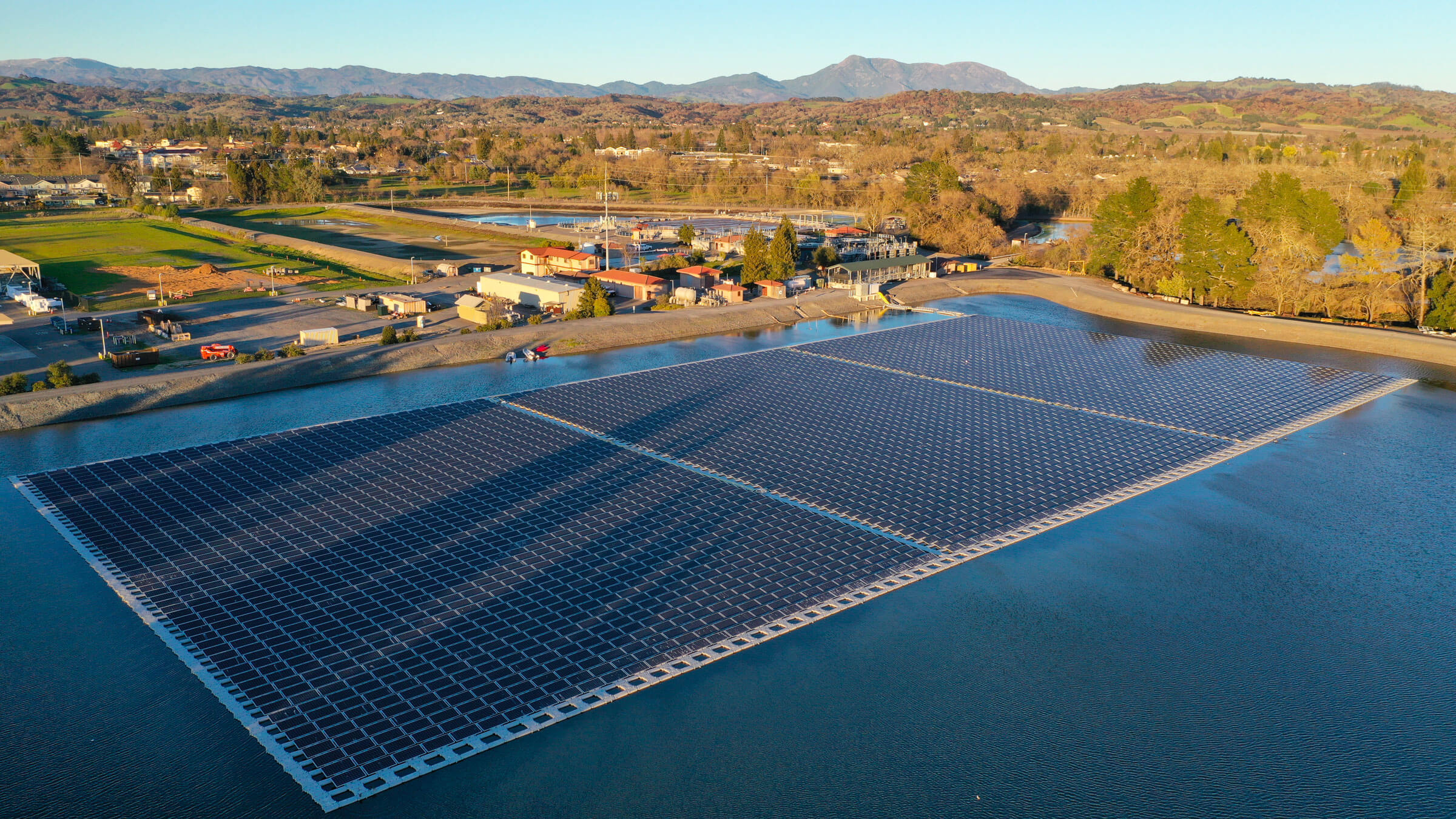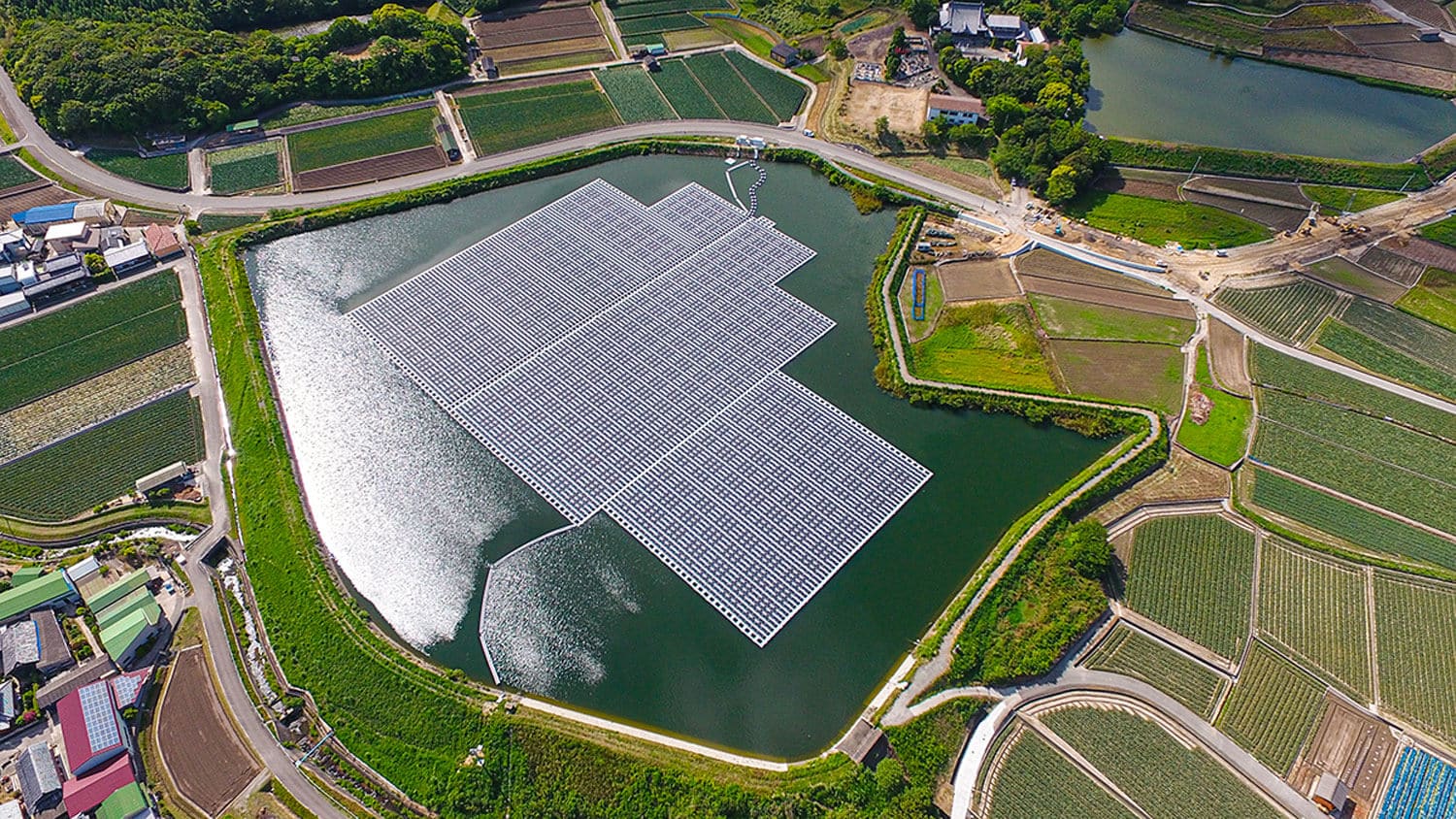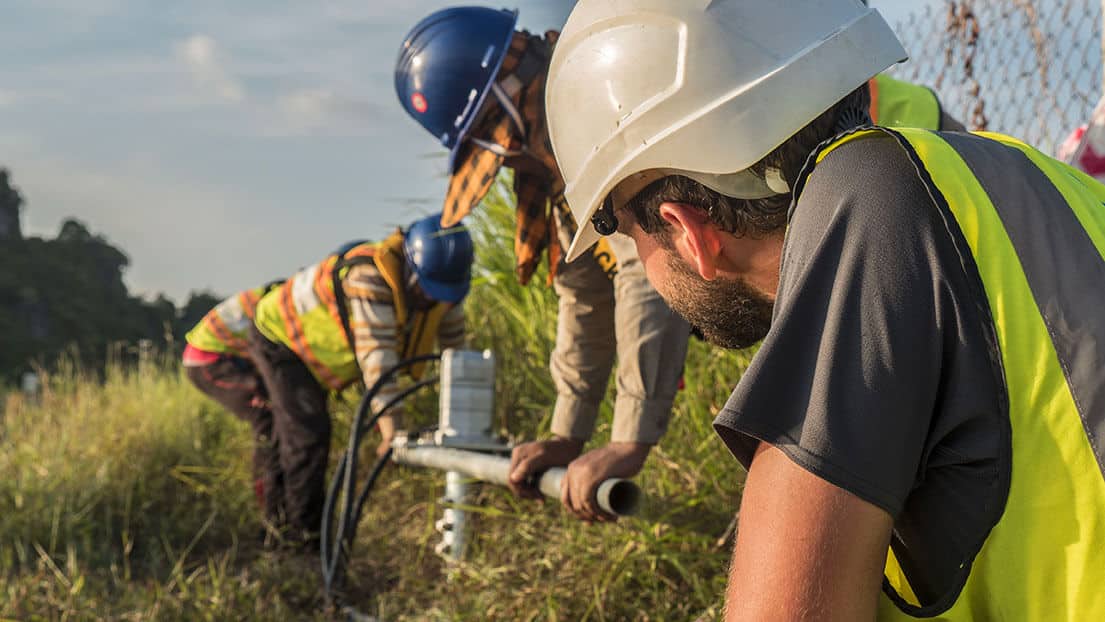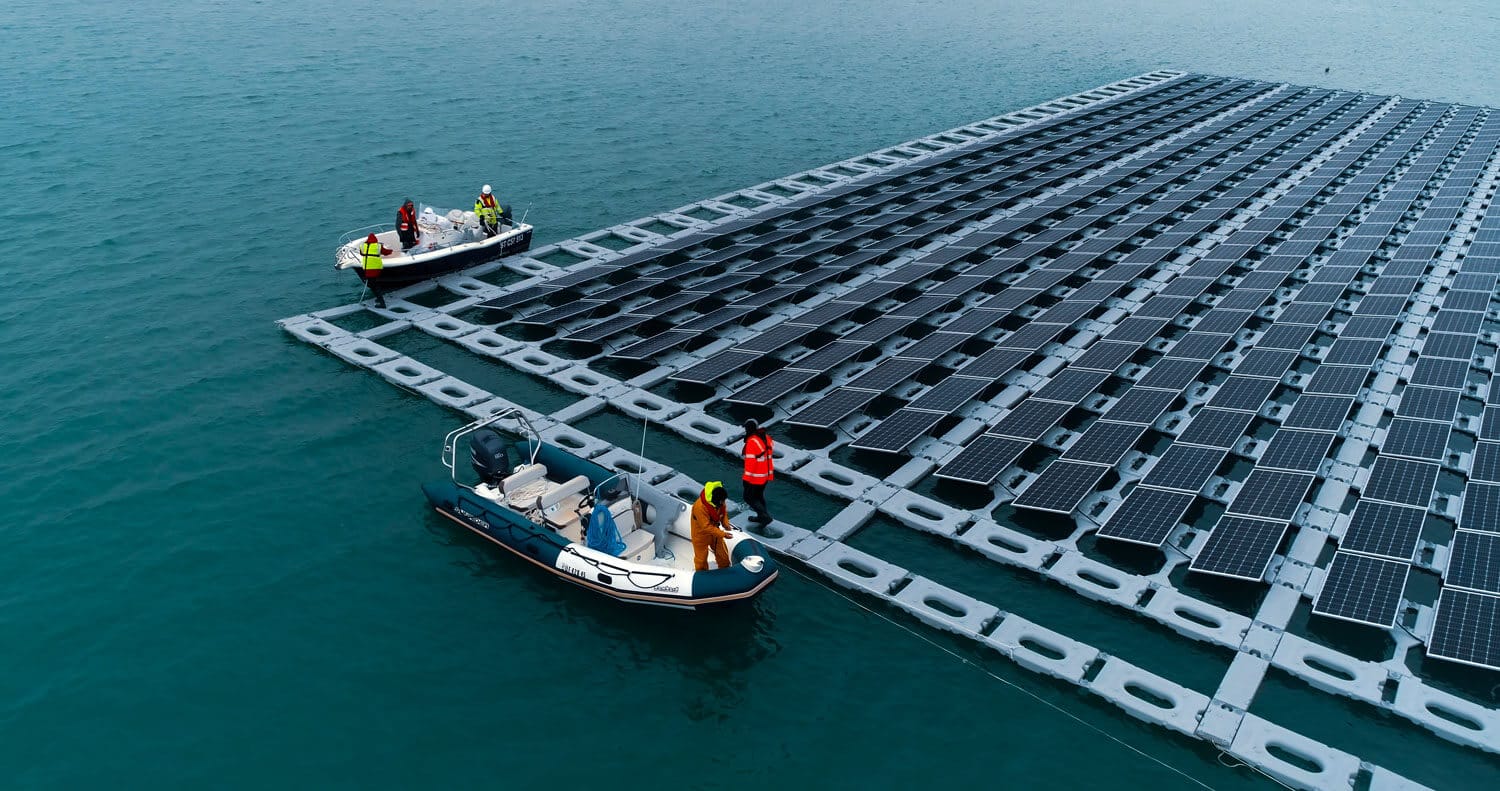Floating solar
Laketricity combines solar energy with water conservation

Laketricity combines solar energy with water conservation
Floating solar power is based on the same electrical principles as ground-mounted and rooftop power plants. What sets it apart is its removeable floating structure, which means it can be installed in unused spaces to deploy large capacities on all types of water.
This is one of the least impacting applications of photovoltaics, since it relies on the use of spaces already in use or exploited for another activity. In fact, this technology meets the growing need to produce clean energy and represents a sustainable solution to land scarcity, the preservation of precious land, deforestation and conflicts of use with existing activities.
Today, the potential for floating solar power worldwide is estimated at over 4TW (source : DNV Institute study published in 2021). Offering a wide variety of applications, the development possibilities and compatibilities are vast.
Irrigation & Winery
Quarry and mining lake
Hydroelectric dam
Aquaculture & Fish farming
Retention pond & Drinking water reservoir
Water treatment pond & Industrial site



In addition to developing your floating solar project, we can integrate other solar power generation solutions to meet your needs and objectives.
At Laketricity, we strive to ensure that our floating solar power plants are well integrated into their environment. To achieve this, we imagine and design tailor-made solutions and systems to cover needs linked to the preservation of biodiversity, or to the social or economic activity of your site.
We mobilize all the expertise needed to build an intelligent floating solar project, working with highly qualified design offices to cover environmental, landscape, tourism and flood risk issues.
Right from the preliminary development phases, we carry out the environmental studies required for the successful development of the project. We also ensure that the plant is sized to meet the specific requirements and challenges identified for your site.
Indeed, our engineering teams design tailor-made layouts for the photovoltaic power plant and its anchoring. This enables us to guarantee optimized energy production, while respecting the environment and ensuring the plant’s long-term safety.
Anchoring design is performed at an advanced stage of the project when the final design of the floating array is approved. The essential data to complete an anchoring design are:
Bifacial photovoltaic panels benefit from a better waterproofing and are therefore perfectly compatible with floating solar projects. Electricity production is increased thanks to the backside of the panels, even if limited because the light reflection (albedo) is about 8%. Moreover, the cost difference with mono-facial panels is small.
The floating photovoltaic power plant and its anchoring are designed to accommodate water level variations. Due to the flexibility of the mooring lines, the floating photovoltaic panel moves on the surface according to the extent of the water level variation.
Submit your application